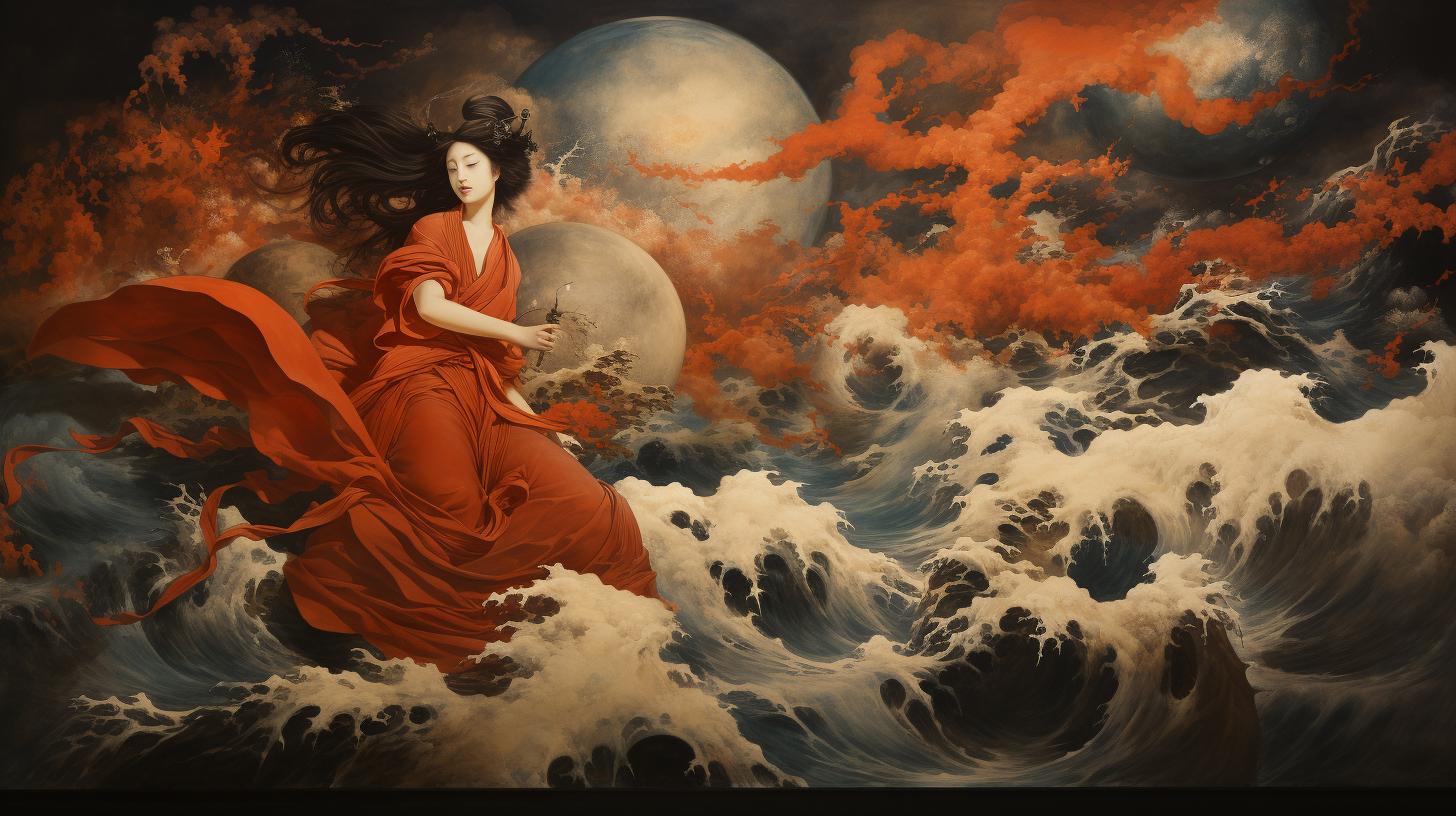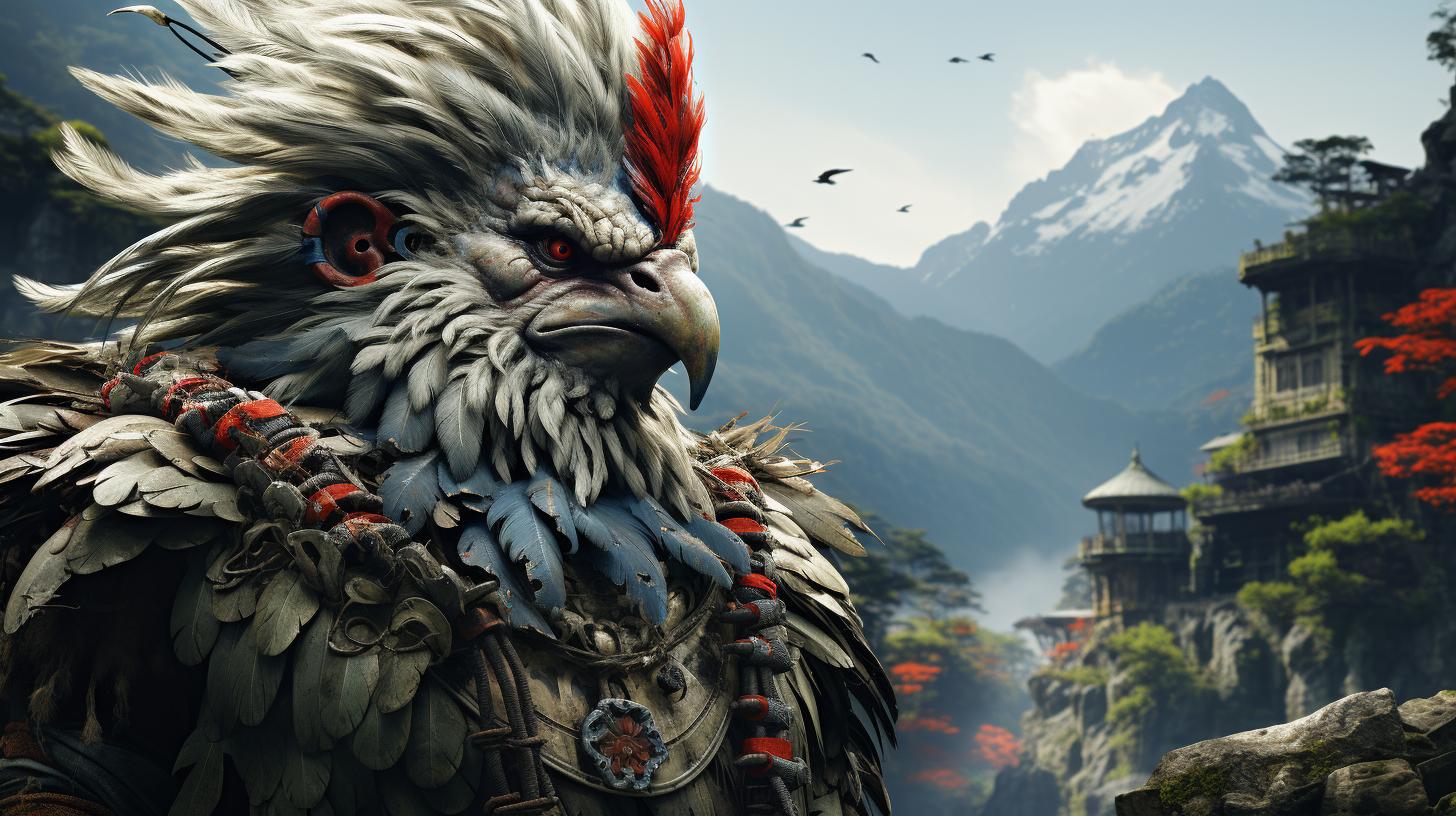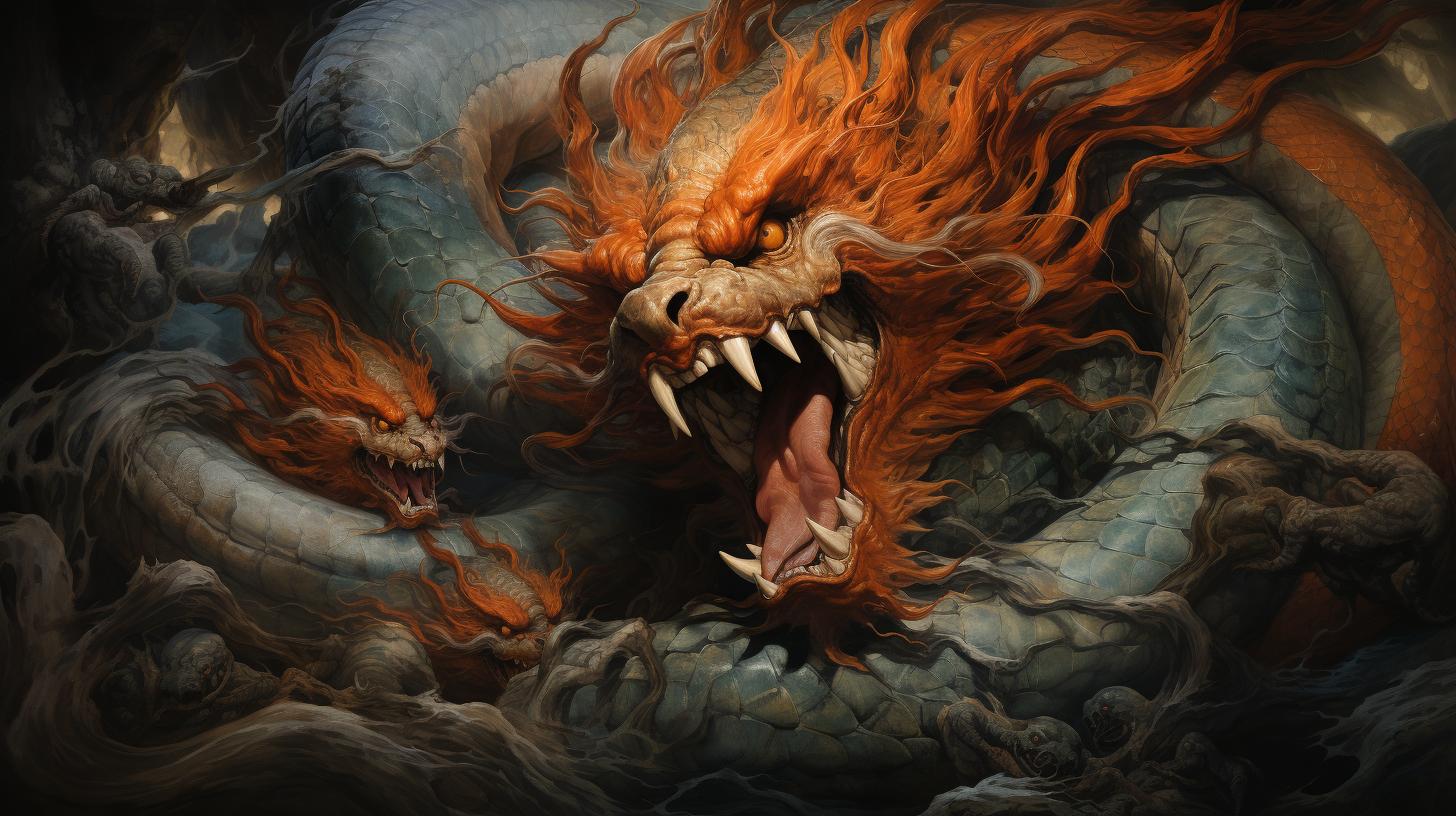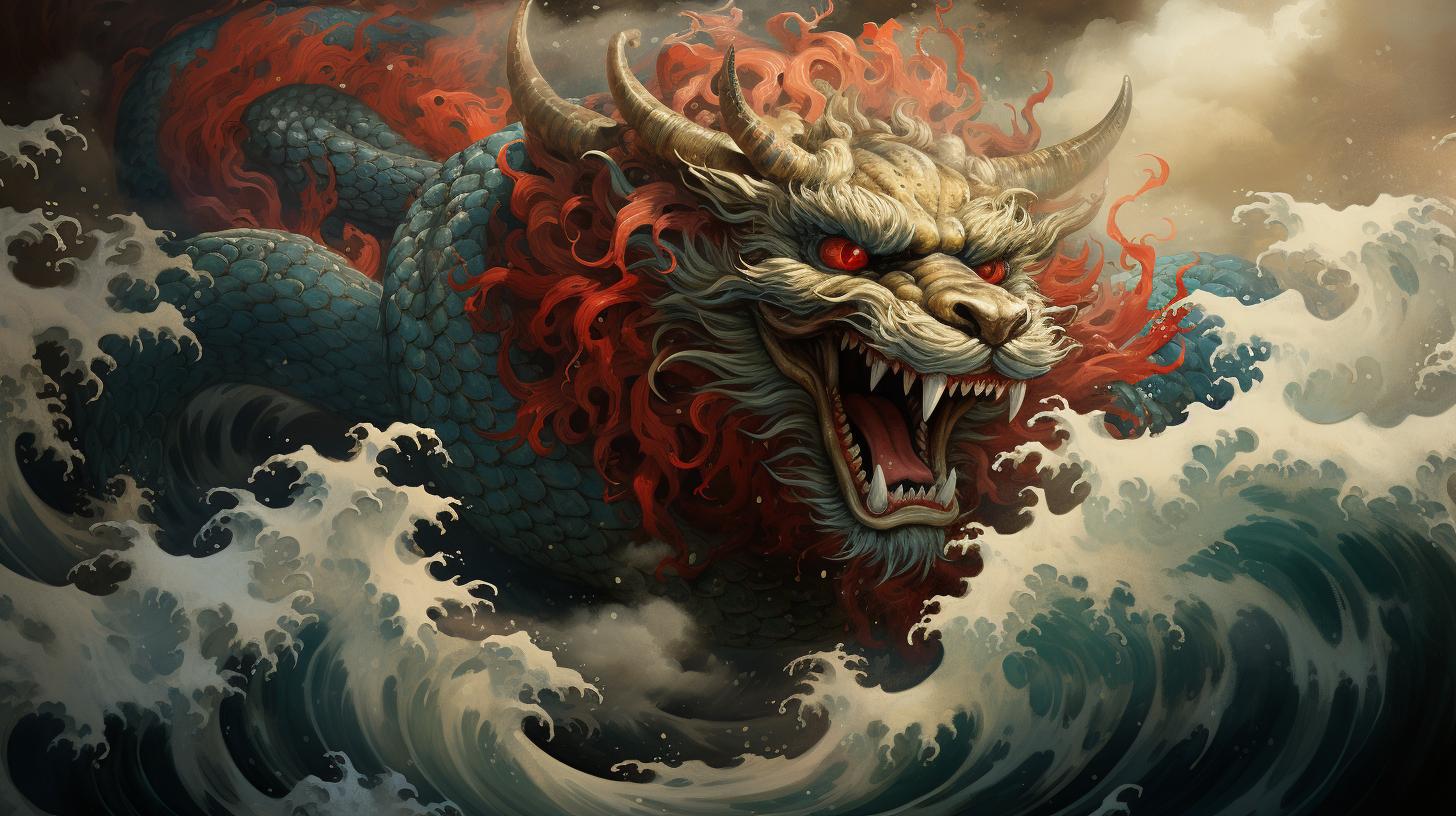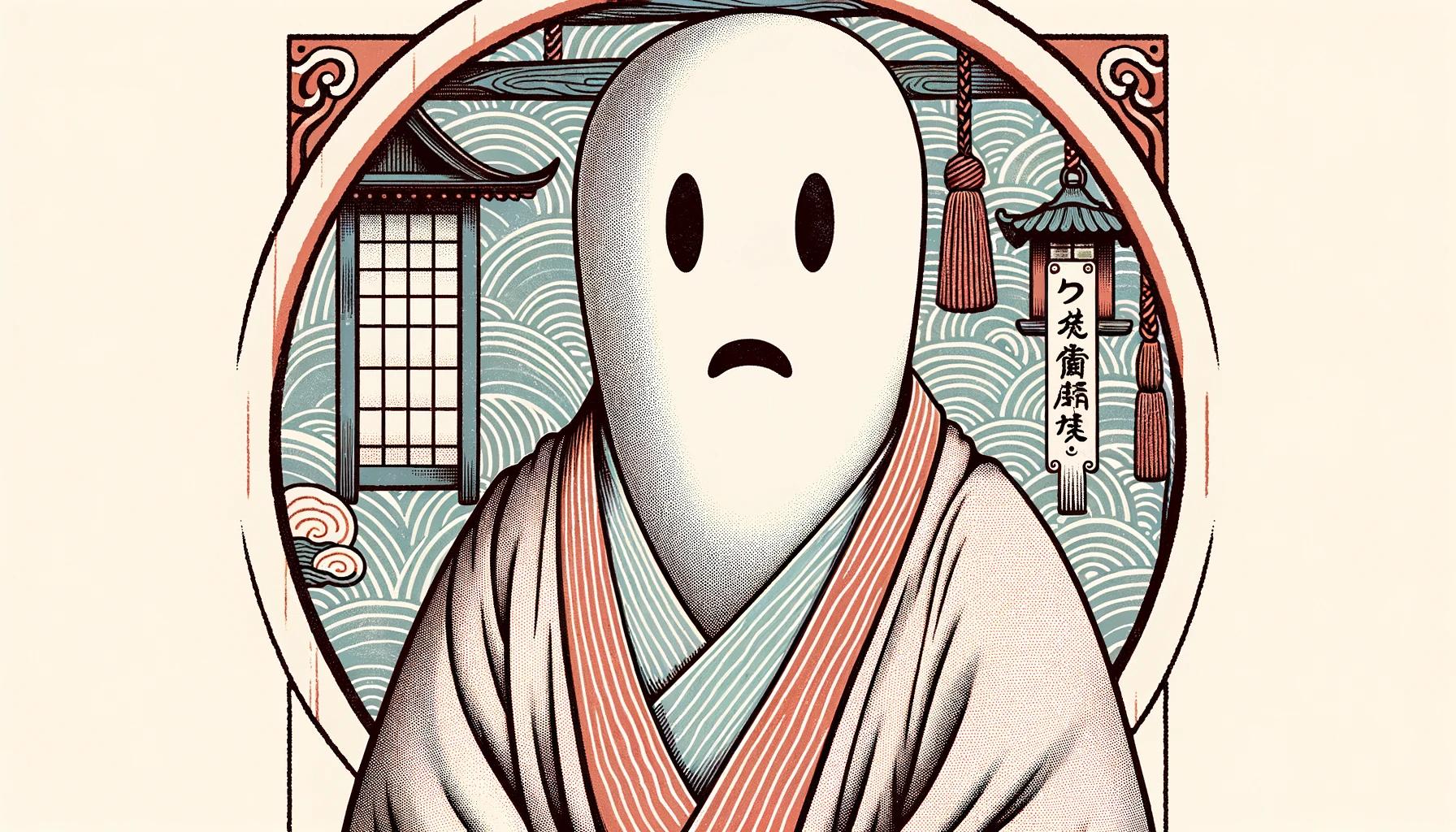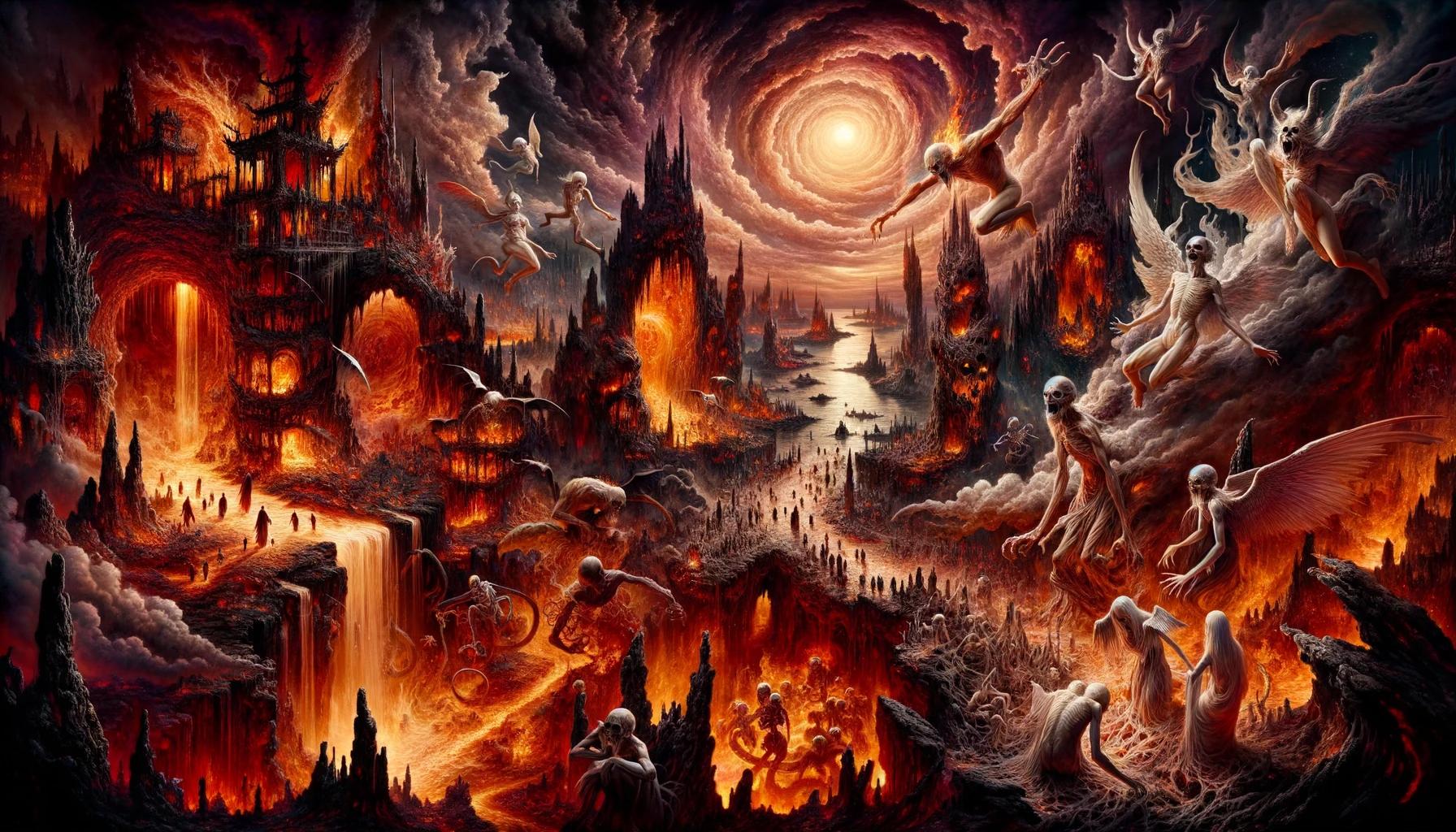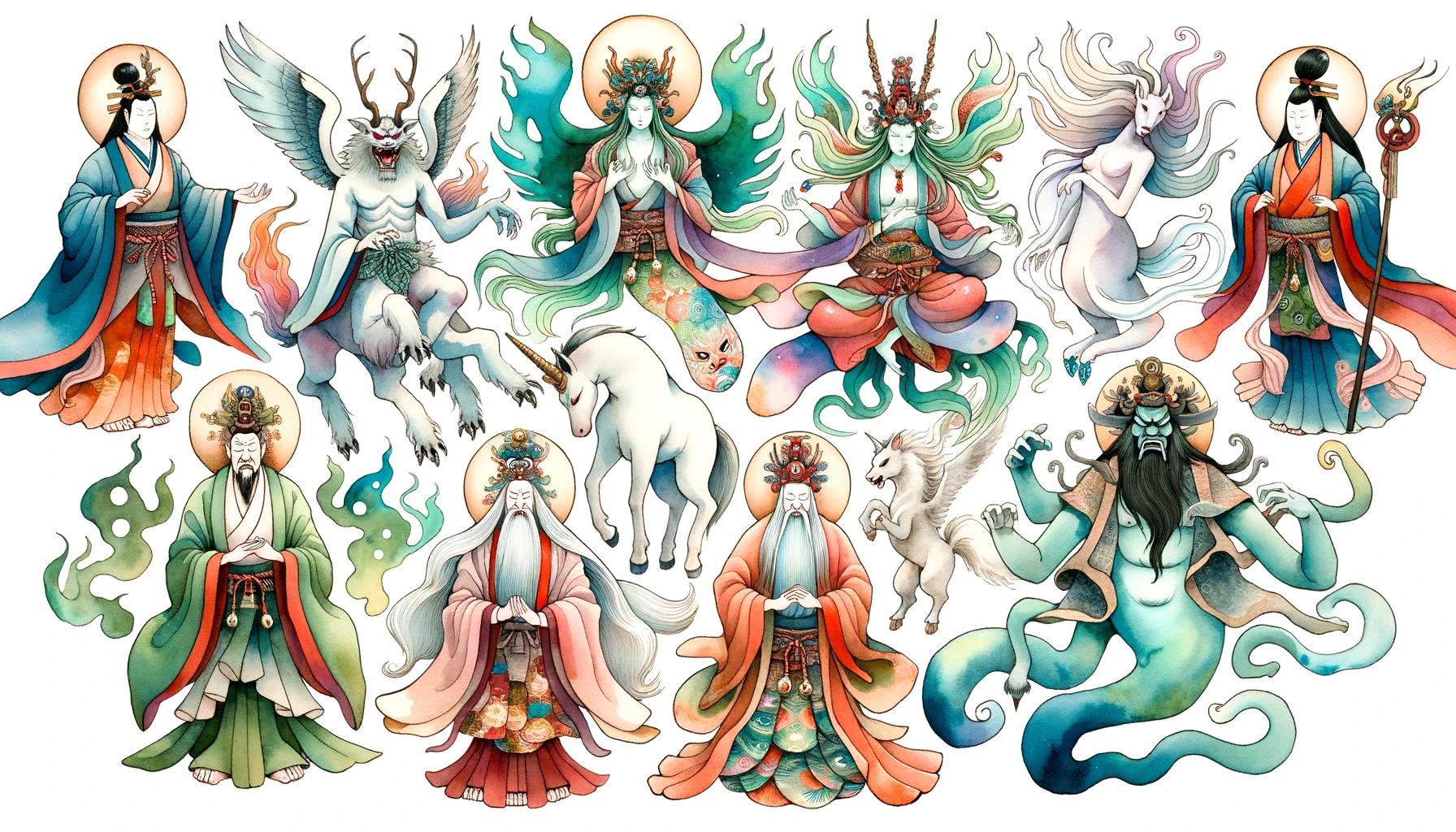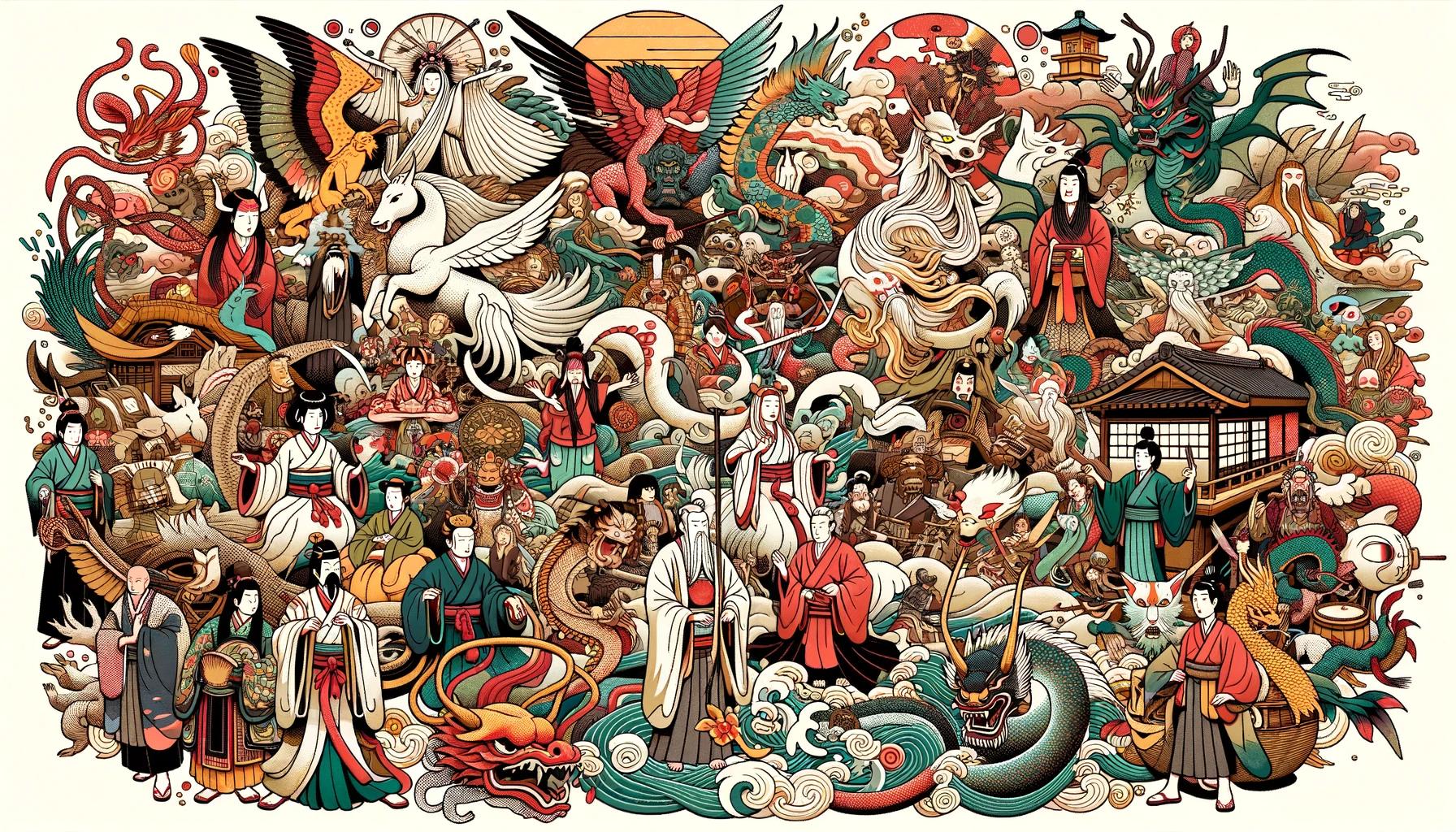What is the Kotoamatsukami God: Exploring the Ancient Shinto Deities
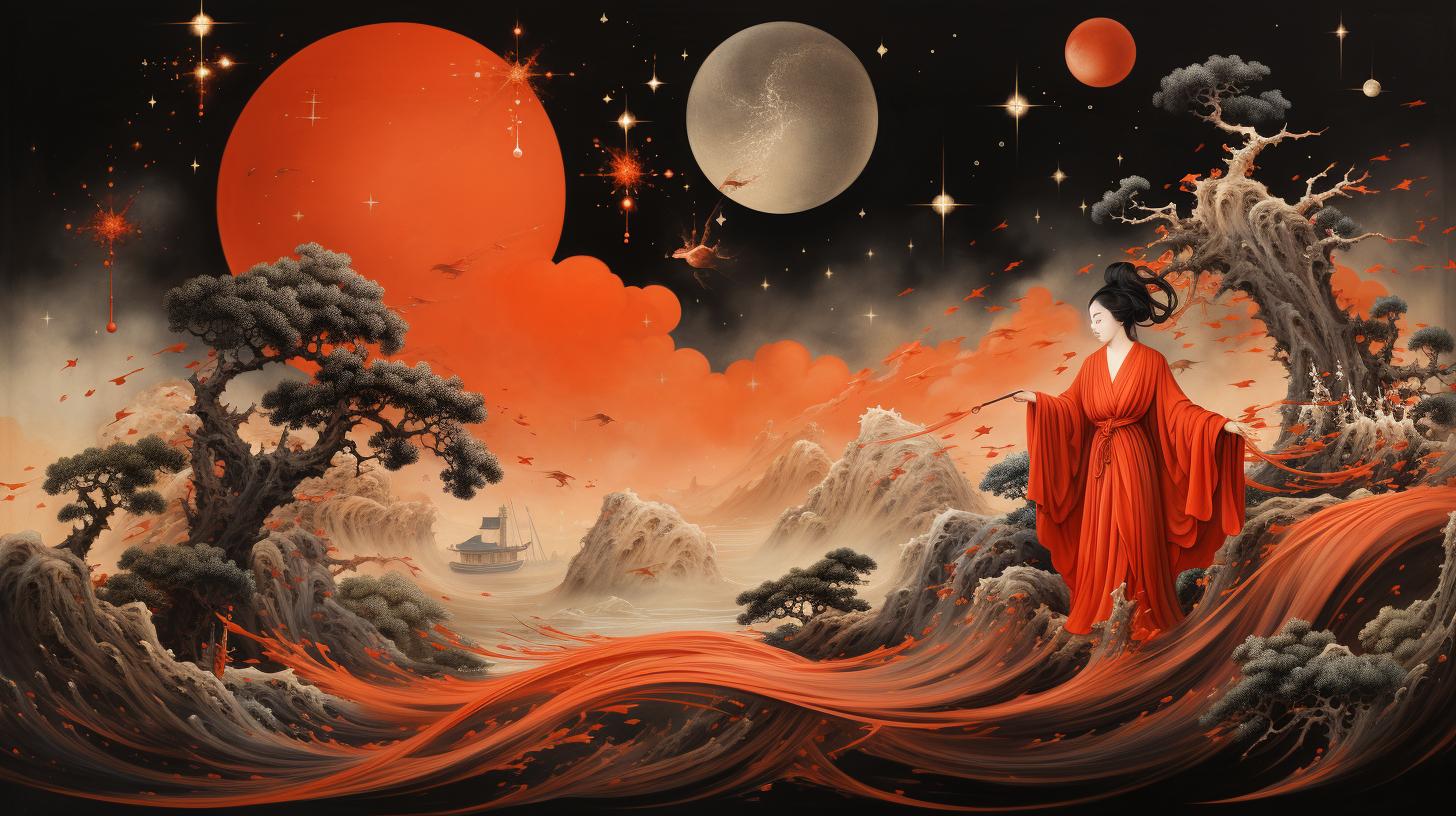
The Kotoamatsukami Gods have a significant presence in Japanese mythology and Shinto religion. These ancient deities were the first to emerge during the creation of the universe in Takamagahara.
Unlike traditional conceptions, they were not conceived in the usual manner. Among the Kotoamatsukami pantheon are notable figures such as Amenominakanushi, Takamimusubi, Kamimusubi, Umashiashikabihikoji, and Amenotokotachi. They play important roles in the mythology, with Takamimusubi being instrumental in the foundation of Japan and Kamimusubi connecting both celestial and terrestrial beings.
Understanding the influence and significance of Kotoamatsukami sheds light on the rich tapestry of Japanese mythos.
The Kojiki and Nihon Shoki are key texts that provide insights into the Kotoamatsukami and other deities in Shinto mythology.
Worship and adoration of these gods were prevalent, and they are revered as central figures in Japanese culture. Alongside Kotoamatsukami, various mythical creatures like dragons, kappa, kitsune, oni, tengu, yūrei, and shinigami add a mystical element to Japan’s folklore.
By exploring the connections between Kotoamatsukami and other mythologies and delving into their roles in the universe’s creation, we gain a deeper understanding of the enigmatic world of Japanese mythology.
The Origins of Kotoamatsukami Gods
The Kotoamatsukami gods hold a significant place in Japanese mythology and are deeply rooted in the religious beliefs of Shinto. Their origin stories shed light on the mysteries surrounding their existence.
Takamagahara: Birthplace of the Gods
Takamagahara, the celestial plain, is the sacred birthplace of the Kotoamatsukami gods. It is believed that these divine beings emerged at the very moment of the universe’s creation, long before the appearance of humans or any other earthly creatures.
Takamagahara served as their divine realm and served as the backdrop for their beginnings.
Non-Traditional Conception of the Deities
The conception of the Kotoamatsukami gods differs from traditional human reproduction. They were not conceived through conventional means but instead emerged as ethereal beings in Takamagahara. This unique aspect sets them apart from other deities and highlights their divine essence.
The Kotoamatsukami gods’ non-traditional conception adds to their mythical aura and emphasizes their extraordinary nature within the wider pantheon of Japanese deities.
The Kotoamatsukami Pantheon
The Kotoamatsukami pantheon consists of a group of powerful deities with unique characteristics and roles in Japanese mythology. Each deity contributes to the rich tapestry of Shinto beliefs and practices.
Amenominakanushi: The Spirit of the North Star
Amenominakanushi, one of the prominent Kotoamatsukami gods, is regarded as the spirit of the North Star. This deity holds great importance in Shinto cosmology and represents cosmic stability and guidance. The ancient Japanese theologian Hirata Atsutane identified Amenominakanushi with this celestial entity, attributing immense spiritual significance to the deity.
Takamimusubi: The Founding Deity of Japan
Takamimusubi plays a crucial role in the foundation of Japan. Believed to be the deity who selected the gods to accompany Ninigi, the legendary ancestor of the Japanese imperial line, Takamimusubi ensured the divine support for the nation’s development.
Additionally, this deity holds a special place in the worship of marriages and is considered a god of matrimonial blessings.
Kamimusubi: Connections with Celestial and Terrestrial Deities
Kamimusubi, with strong ties to both celestial and terrestrial deities, features prominently in the mythology of Izumo. This deity is known for transforming the grains produced by Ōgetsuhime after her tragic demise, showcasing a powerful connection between life, death, and rebirth in the cyclical nature of the natural world.
Umashiashikabihikoji: Transformation of Ōgetsuhime’s Grains
Umashiashikabihikoji’s significant role involves the transformation of the grains produced by Ōgetsuhime, a goddess associated with food and sustenance. After Ōgetsuhime’s untimely demise, Kamimusubi entrusted Umashiashikabihikoji with the task of transforming these grains, granting them a sacred and transformative essence.
Amenotokotachi: Another Significant Kotoamatsukami Deity
Amenotokotachi, another prominent deity within the Kotoamatsukami pantheon, has a distinct presence in Japanese mythology. Revered as a powerful and primordial god, Amenotokotachi encompasses the divine essence that permeates the entire universe, representing the fundamental forces and energies that shape existence.
Significance of Kotoamatsukami in Shinto Religion
Worship and Adoration of Kotoamatsukami
The Kotoamatsukami gods hold great significance in the Shinto religion and are revered as powerful and sacred entities. Worship of these deities involves rituals, prayers, and offerings to seek their blessings, protection, and favor.
Devotees believe that by showing devotion to Kotoamatsukami, they can tap into their divine power and guidance for various aspects of life, including prosperity, fertility, and protection.
Kojiki and Nihon Shoki: Key Texts on Japanese Mythology
The Kojiki and Nihon Shoki are essential texts in Japanese mythology that provide detailed accounts of the Kotoamatsukami gods and their role in the creation of the universe and the shaping of Japan.
These texts serve as primary sources for understanding the narratives, genealogies, and rituals associated with Kotoamatsukami and other deities in the Shinto pantheon. They shed light on the historical and cultural significance of these gods within the religious framework of Japan.
Kamiyonanayo and Other Deities in Shinto Mythology
In Shinto mythology, the Kotoamatsukami gods are part of a broader pantheon known as the Kamiyonanayo, which includes prominent deities like Izanagi-no-Mikoto and Izanami-no-Mikoto. These deities play crucial roles in shaping the world and are connected to various aspects of nature, creation, and human life.
Understanding the relationships and interactions among the Kotoamatsukami gods and other deities enhances our comprehension of Shinto cosmology and religious practices.
Other Mythical Creatures in Japanese Culture
Japan is rich in folklore and mythology, with a plethora of legendary creatures that captivate the imagination. These mythical beings play significant roles in Japanese culture and are often depicted in various art forms, stories, and traditions.
Dragons, Kappa, and Kitsune: Legendary Creatures in Japan
Dragons, known as “ryū” in Japanese, hold a prominent place in Japanese mythology. They are legendary creatures associated with water and are believed to bring good fortune and protection. Kappa, on the other hand, are water-dwelling creatures that inhabit rivers and lakes.
Known for their mischievous nature, kappa are often depicted as turtle-like humanoids with a bowl-like indentation on their heads.
Kitsune, or foxes, are revered creatures in Japanese folklore. They are known for their shape-shifting abilities and intelligence.
Kitsune are often portrayed as cunning tricksters or helpful, wise spirits. In Japanese culture, they are seen as both revered and feared.
Oni, Tengu, Yūrei, and Shinigami: Supernatural Entities
Oni are demonic beings in Japanese mythology.
These creatures are depicted as ogre-like, with horns, sharp claws, and fierce expressions. In traditional folklore, oni represent evil and are associated with punishment and torment. They are often depicted as guardians of hell.
Tengu, on the other hand, are supernatural creatures. They are known for their bird-like features, particularly their long noses. Tengu are often portrayed as mischievous spirits or protective deities.
They are associated with mountains, martial arts, and spiritual discipline.
Yūrei, commonly referred to as ghosts or spirits, are an integral part of Japanese tales. These supernatural entities are believed to be the souls of the deceased, often depicted as pale, ethereal figures clad in white garments.
Yūrei are associated with unfinished business, tragedy, and vengeance.
Shinigami, meaning “death god” or “death spirit,” are deities related to the cycle of life and death. They are often depicted as grim reaper-like figures, responsible for guiding souls to the afterlife.
Shinigami hold a significant place in Japanese popular culture, appearing in various media and art forms.
Exploring the mythical creatures of Japan provides insights into the rich cultural tapestry and beliefs that have shaped the country’s folklore.
These legendary beings continue to capture imaginations and inspire creativity to this day.
Exploring the Connections: Kotoamatsukami in Japanese Mythology
Japanese mythology is rich with intriguing connections and parallels to other mythologies around the world. Delving into the realm of Kotoamatsukami opens up fascinating comparisons with Greek, Egyptian, and Celtic mythologies.
Comparisons with Greek, Egyptian, and Celtic Mythologies
The Kotoamatsukami gods bear resemblances and share certain traits with deities from other ancient mythologies. While each mythology has its unique characteristics, exploring the similarities allows us to uncover deeper cultural and historical connections.
Role of Kotoamatsukami in the Creation of the Universe
Kotoamatsukami holds a crucial role in the creation of the universe according to Japanese mythology. Understanding their significance sheds light on the origins and dynamics of the Japanese cosmological belief system.
Kotoamatsukami and the Journey of Amaterasu
Within Japanese mythology, Kotoamatsukami plays a pivotal part in the journey of Amaterasu, the sun goddess. Exploring this connection reveals insights into the divine lineage and the intricate relationships between the gods within the pantheon.
By delving into these connections, we gain a broader perspective on the mythical world of Kotoamatsukami and its place within the larger context of global mythologies.
Unveiling the Mysteries: Frequently Asked Questions about Kotoamatsukami
Who Were the Kotoamatsukami Gods?
The Kotoamatsukami Gods are a group of ancient deities in Japanese mythology.
They were the first gods to emerge during the creation of the universe. Notable members include Amenominakanushi, Takamimusubi, Kamimusubi, Umashiashikabihikoji, and Amenotokotachi. These gods hold significant roles in Japanese culture and are revered in Shinto religion.
What Was Their Role in Japanese Mythology?
The Kotoamatsukami Gods played crucial roles in Japanese mythology. They were responsible for the creation of the world and were present during the birth of Takamagahara, the heavenly realm. Takamimusubi, in particular, played a vital role in the foundation of Japan by choosing gods to accompany Ninigi and aiding Emperor Jimmu with the three-legged solar crow.
Additionally, Kotoamatsukami deities were worshipped and revered as gods of marriages and were considered integral to the divine lineage of Japan’s emperors.
How Were They Different from Other Deities?
The Kotoamatsukami Gods differ from other deities in Japanese mythology in their unique origin and elevated status. They were the first gods to come into existence, born in Takamagahara without conventional conception.
Their significance lies in their connection to the creation of the universe and their influential roles in shaping Japanese culture and religion. Unlike other deities, the Kotoamatsukami are considered primordial and hold a special place in the mythological hierarchy.

